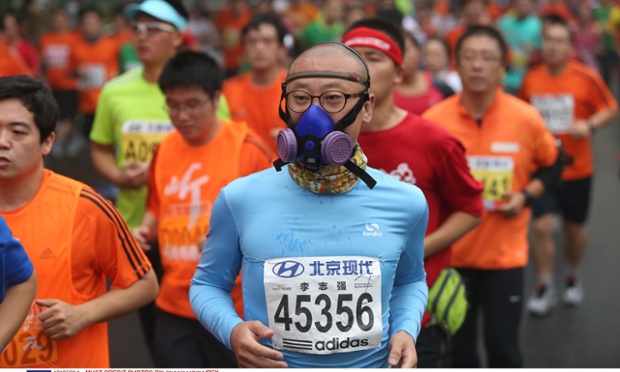China now has the world’s largest economy, but it came at a steep price: Inhaling has become a danger, the atmosphere so toxic. The architecture has begun to alter to accommodate this new reality, bubbles and domes dotting downtowns which seem like parts of Martian cities only survivable under cover. The opening of Oliver Wainwright’s Guardian report “Inside Beijing’s Airpocalypse“:
“The scene could be straight from a science-fiction film: a vision of everyday life, but with one jarring difference that makes you realise you’re on another planet, or in a distant future era.
A sports class is in full swing on the outskirts of Beijing. Herds of children charge after a football on an artificial pitch, criss-crossed with colourful markings and illuminated in high definition by the glare of bright white floodlights. It all seems normal enough – except for the fact that this familiar playground scene is taking place beneath a gigantic inflatable dome.
‘It’s a bit of a change having to go through an airlock on the way to class,’ says Travis Washko, director of sports at the British School of Beijing. ‘But the kids love it, and parents can now rest assured their children are playing in a safe environment.’
The reason for the dome becomes apparent when you step outside. A grey blanket hangs in the sky, swamping the surroundings in a de-saturated haze and almost obscuring the buildings across the street. A red flag hangs above the school’s main entrance to warn it’s a no-go day: stay indoors at all costs. The airpocalypse has arrived.
Beijing’s air quality has long been a cause of concern, but the effects of its extreme levels of pollution on daily life can now be seen in physical changes to the architecture of the city. Buildings and spaces are being reconfigured and daily routines modified to allow normal life to go on beneath the toxic shroud.”
Tags: Oliver Wainwright

